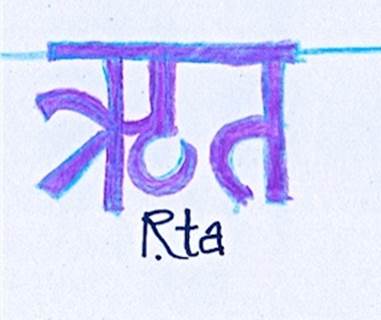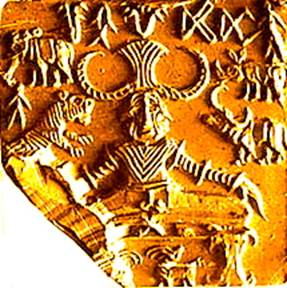

Within the Rig Veda: excerpts from R.L. Kashyap
Knowledge constitutes the bulk of the Rig Veda.
Rig Veda does not speak of a Cosmic Controller who controls all beings, himself
staying outside of them. Every human being has to become aware of this self-law
and follow the path of immortality unique to him/her.
There is no conception of hell in the Rig Veda. …there is no question of the
unbelievers or skeptics being thrust into hell after their death.
Sin: “The conception of sin as a result of natural wickedness of man found no
place in the thought of [the Rishis] these deep thinkers.” - Sri Aurobindo
Evil or falsehood is opposed to the Cosmic Law (RITAM) and is connected with
ignorance or unconsciousness. According to the Rig Veda sages, there is no such
thing as primordial evil.

There are numerous mantras from the Rig Veda quoted verbatim in the Upanishads.
There is no exhortation to give up desire in the ideal of Vedic life.
Bhakti Yoga and establishing an intimate relationship with the various aspects
of the One is found in the Rig Veda.
There are more than 30 women sages in the Rig Veda with specific hymns
associated with them.
Women had a high status in that society.
There are many references to the Rishis saying that they recite the Vedas, still
they are plagued by a variety of troubles.
The battles in the Rig Veda did not occur on earth, but in the atmosphere or the
subtle planes.
There is no archaeological evidence for the so-called Aryan invasion.
There is an algorithm for building the pyramid shaped funeral altar in the
Shulba Sutras.
The Shatapatha Brahmana is at least 500-1000 years later than the Rig Veda.
Quoted from: “Why Read Rig Veda?” and “Essentials of Rig Veda” by R.L.
Kashyap; SAKSI, Sri Aurobindo Kapâli Sâstry Institute of Vedic Culture,
Bangalore, 2005.

RIG VEDA SAMHITA: (Entire 12 volume text in Devanagari, Translation and Notes),
by R.L. Kashyap; SAKSI, Sri Aurobindo
Kapâli Sâstry Institute
of Vedic Culture, Bangalore, India, 2009.
R.L Kashyap is Professor Emeritus of Electrical Engineering and Computer
Engineering at Purdue University, Indiana, USA. He has a Master’s degree from
the Indian Institute of Science, Bangalore and obtained a PhD. from Harvard
University. He is the Trustee & Honorary Director of the Sri Aurobindo Kapâli
Sâstry Institute of Vedic Culture in Bangalore.
R.L. Kashyap’s translations reflect the teachings of Sri Aurobindo and his
theories on the Rig Veda, which have been collected in the book “Secret of the
Veda”. Aurobindo’s teachings are based in his acceptance of human evolution.
Thus the translations reflect the idea that through experience and suffering,
humans are evolving towards a supra-mental superconscient state — contrary to
the tradition of cyclical time being devolutionary, meaning we begin as the One
and move down through the cycles into 'solidification' and inevitable
dissolution.
T.V. Kapali Sastry further expanded Sri Aurobindo’s ideas. T.V. Kapali Sastry
was considered a ‘brilliant intellect’ and wrote in Sanskrit, English, Tamil and
Telugu published in 12 volumes. His magnum opus is said to be ‘Siddhañjana’
(1945), a commentary on the first Ashtaka of the Rig Veda, which explores the
spiritual and psychological depths of the ancient hymns. T.V. Kapali Sastry
finds astonishing echoes of the Veda in the tantra, in thought and in practice.
He holds that the tantra is as old as the Veda and both have a common origin.
[From the back cover of “Unveiling the Light in the Veda” by R.L. Kashyap; and
“New Light on the Veda” (1952) by T.V. Kapali Sastry].

|
Questions
or comments about articles on this site: |
Copyright© V. Susan Ferguson |
Technical questions or
comments about the site: |
|
|